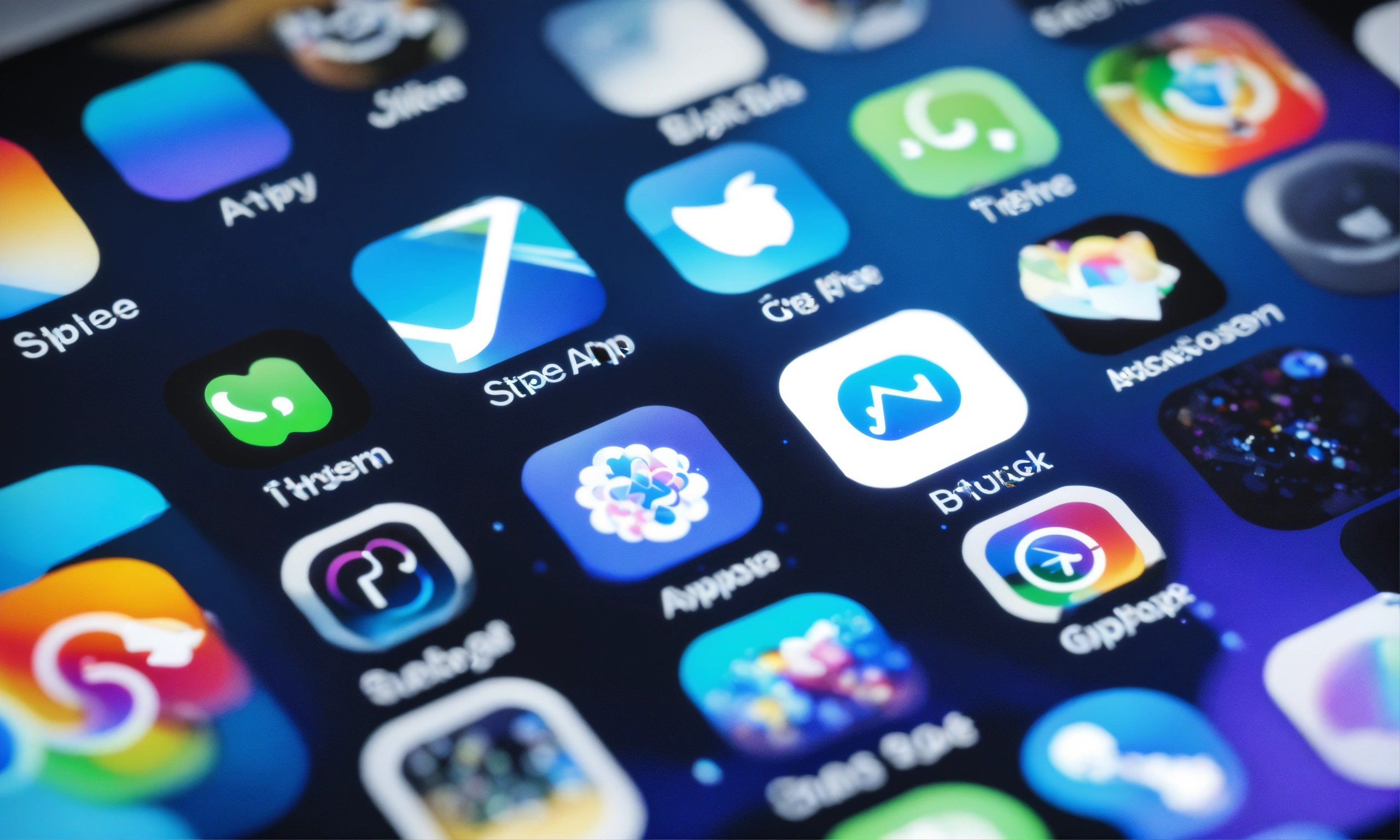Have you ever dreamed of creating your own app but felt overwhelmed by the technical aspects of coding? Well, dream no more! In this article, we will show you how to make your very own app without any coding knowledge. Yes, you read that right. No coding required! Whether you have a brilliant app idea or want to enhance your business with a customized app, we’ve got you covered.

Understanding the No-Code App Development Process
Gone are the days when you needed to be a coding wizard to develop an app. Thanks to the rise of no-code app development platforms, anyone can now create their own app with ease. But before we dive into the tools and techniques, let’s first understand the basic process of no-code app development.
The no-code app development process typically involves five main steps: idea generation, design, functionality, testing, and launch. While these steps might sound familiar to traditional app development, the key difference lies in the absence of coding. Instead of writing lines of code, you’ll be utilizing intuitive drag-and-drop builders, app templates, and other no-code tools to bring your app to life.
Creating an app without coding not only saves time and resources but also empowers individuals with little to no coding knowledge to turn their ideas into reality. So, let’s explore the benefits of choosing a no-code approach to app development.
Benefits of Creating an App Without Coding
- Ease of Use: No-code app development platforms are designed to be user-friendly, making it easy for anyone to create an app. With intuitive interfaces and drag-and-drop functionality, you can build your app without getting lost in lines of complex code.
- Time and Cost Efficiency: Traditional app development can be time-consuming and costly, especially if you need to hire developers or learn coding from scratch. No-code app development eliminates these barriers, allowing you to create an app quickly and at a fraction of the cost.
- Flexibility and Customization: No-code tools offer a wide range of templates, themes, and pre-built components that you can customize to fit your app’s unique requirements. This flexibility enables you to create a personalized app that aligns with your brand and vision.
- Rapid Iteration and Prototyping: With no-code app development, you can quickly iterate and test different versions of your app without the need for extensive coding. This agile approach allows you to gather feedback, make improvements, and refine your app before launching it to the market.
Now that we’ve explored the benefits of no-code app development, let’s take a look at the tools and platforms available to help you create your app without coding.
Tools and Platforms for No-Code App Development
- Drag-and-Drop Builders: Drag-and-drop builders are the backbone of no-code app development. These intuitive platforms allow you to visually design your app by dragging and dropping pre-built components onto a canvas. Some popular drag-and-drop builders include Bubble, Adalo, and Thunkable.
- App Templates: If you’re looking for a head start, app templates can be a great option. These pre-designed app templates provide a foundation for your app, allowing you to customize and add your unique features. Template platforms like UI Bakery and NoCodeAPI offer a wide range of templates for various app categories.
- No-Code Tools: In addition to drag-and-drop builders and app templates, there are a plethora of no-code tools available to add functionality to your app. From database management to payment processing, tools like Zapier, Airtable, and Stripe enable you to integrate powerful features into your app without writing a single line of code.
Now that you’re familiar with the tools and platforms for no-code app development, it’s time to choose the right app idea and define your target audience.
Choosing the Right App Idea and Defining Your Target Audience
A successful app starts with a great idea, but not all ideas are created equal. To increase your chances of success, it’s essential to choose an app idea that solves a problem or fulfills a need in the market. Here are some steps to help you choose the right app idea:
- Identify a Problem: Look for gaps or inefficiencies in existing apps or industries. Is there a problem that you can solve with your app? Conduct market research and gather insights to validate your app idea.
- Focus on Your Passion: Building an app is a journey, and it’s important to choose an idea that aligns with your passion and interests. When you’re passionate about your app, it will shine through in the final product.
- Define Your Target Audience: Clearly define who your app is for. Understanding your target audience’s needs, preferences, and pain points will help you tailor your app to their specific requirements.
Once you have a solid app idea and a clear understanding of your target audience, it’s time to design your app without coding.
Designing Your App Without Coding
Design plays a crucial role in the success of your app. A well-designed app not only enhances the user experience but also creates a lasting impression. Here are some design tips to help you create a visually appealing app without coding:
- Keep it Simple: Avoid clutter and focus on simplicity. Use clean layouts, intuitive navigation, and consistent branding elements to create a seamless user experience.
- Choose the Right Colors and Fonts: Colors and fonts evoke emotions and set the tone for your app. Select a color palette and fonts that align with your brand and appeal to your target audience.
- Optimize for Different Devices: With users accessing apps on various devices, it’s crucial to ensure your app is responsive and optimized for different screen sizes. Test your app on different devices to ensure a consistent experience.
Now that you have a visually appealing app design, it’s time to add functionality using no-code tools.
Adding Functionality to Your App Using No-Code Tools
No-code tools offer a wide range of functionality that can take your app to the next level. Here are some key features you can add to your app without writing a single line of code:
- Database Management: Tools like Airtable and Firebase enable you to store and manage data within your app. Whether it’s user profiles, product catalogs, or real-time data, these tools provide a robust backend for your app.
- User Authentication: Secure your app with user authentication features. Services like Auth0 and Firebase Authentication allow you to add user registration, login, and password reset functionality to your app.
- Payment Processing: Monetize your app by integrating payment processing features. Stripe, PayPal, and Braintree are popular no-code tools that enable secure and seamless payment transactions.
With the help of these no-code tools, you can create a feature-rich app that meets your users’ needs. But before you launch your app, it’s essential to test it thoroughly.
Testing and Launching Your App
Testing is a crucial step in the app development process. It ensures that your app functions as intended and provides a seamless user experience. Here are some testing best practices for your no-code app:
- User Testing: Gather feedback from real users to identify any usability issues or bugs. Conduct beta testing and iterate based on user feedback to refine your app.
- Compatibility Testing: Test your app on different devices, operating systems, and browsers to ensure compatibility across platforms. Address any performance or layout issues that may arise.
Once you’ve tested your app and made necessary improvements, it’s time to prepare for the launch. Define your marketing strategy and start promoting your app to reach your target audience.
Marketing and Promoting Your No-Code App
Launching your app is just the beginning. To achieve success, you need to market and promote your app effectively. Here are some marketing strategies to consider:
- App Store Optimization (ASO): Optimize your app store listing with relevant keywords, compelling app descriptions, and attractive screenshots. This will increase your app’s visibility and chances of being discovered by potential users.
- Content Marketing: Create engaging content, such as blog articles, videos, and social media posts, to educate and attract your target audience. Share insights, tips, and success stories related to your app’s niche.
- Influencer Marketing: Collaborate with influencers or industry experts who have a significant following in your app’s niche. They can help promote your app to their audience and generate buzz around it.
Remember, marketing is an ongoing process. Continuously analyze your app’s performance, gather user feedback, and iterate based on the insights you gain. By constantly improving and promoting your app, you can maximize its potential and achieve long-term success.
Conclusion and Future of No-Code App Development
In conclusion, creating an app without coding is no longer a distant dream. With the availability of no-code app development platforms and tools, anyone can turn their app idea into reality. The benefits of no-code app development, such as ease of use, time and cost efficiency, and flexibility, make it an attractive option for aspiring app creators.
As technology continues to advance, we can expect no-code app development to become even more accessible and powerful. With the combination of no-code tools, creative thinking, and a passion for innovation, the possibilities are endless. So, if you’ve been holding back on your dreams of becoming an app creator, now is the perfect time to unlock your potential and take control of your app’s destiny. Start exploring the world of no-code app development today!
Remember, you don’t need to be a coding expert to make your app a reality. Embrace the no-code revolution and let your creativity soar. Happy app building!










